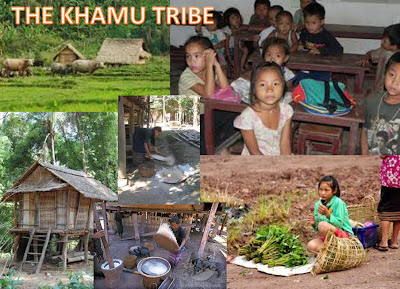Hilltribe peoples migrated over 100 years ago from the southern part of China into Laos, Myanmar (Burma), Vietnam and Thailand. They have preserved their way of life with little change for over thousand years.
Comprising seven major tribes, KAREN, HMONG (MEO), YAO, LISU, LAHU, LAWA and AKHA, each has its own distinct culture, religion, language, art and colourful style of dress, these people make their homes in the highlands. The main profession of all these tribes is farming. All the tribes are hospitable and welcome visitors to their villages, providing them with the opportunity to see and experience their way of life.
Beside the 7 main tribes, their are also some rare and smaller tribes living in northern Thailand, such as the PALONG, KHAMU, THINS and MLABRI.
the PADUANG (the "Long Necks")

KAREN (the largest group of hill tribe in Thailand)
The Bwa G'Naw, known to many as Karen, and to others as Kariang, are one of the largest hill tribes in Southeast Asia. The total population of Karen people is unknown, since they are spread throughout Burma, Laos and Thailand, and no reliable census has been conducted in Burma since the 1930's. Population estimates range from 7.5 million to 14 million people. (The more conservative estimate makes their population equivalent to that of Switzerland). The approximately 320,000 Karen in Thailand comprise half of the country's total hill tribe population.
While the Karen still practice slash and burn farming as other hill tribes do, they differ in that they live in permanent villages at lower elevations and have been aggressive in developing environmentally sustainable terraced rice fields. These factors have allowed the Karen to better integrate themselves into Thai society.
The Bwa G'Naw, known to many as Karen, and to others as Kariang, are one of the largest hill tribes in Southeast Asia. The total population of Karen people is unknown, since they are spread throughout Burma, Laos and Thailand, and no reliable census has been conducted in Burma since the 1930's. Population estimates range from 7.5 million to 14 million people. (The more conservative estimate makes their population equivalent to that of Switzerland). The approximately 320,000 Karen in Thailand comprise half of the country's total hill tribe population.
While the Karen still practice slash and burn farming as other hill tribes do, they differ in that they live in permanent villages at lower elevations and have been aggressive in developing environmentally sustainable terraced rice fields. These factors have allowed the Karen to better integrate themselves into Thai society.








